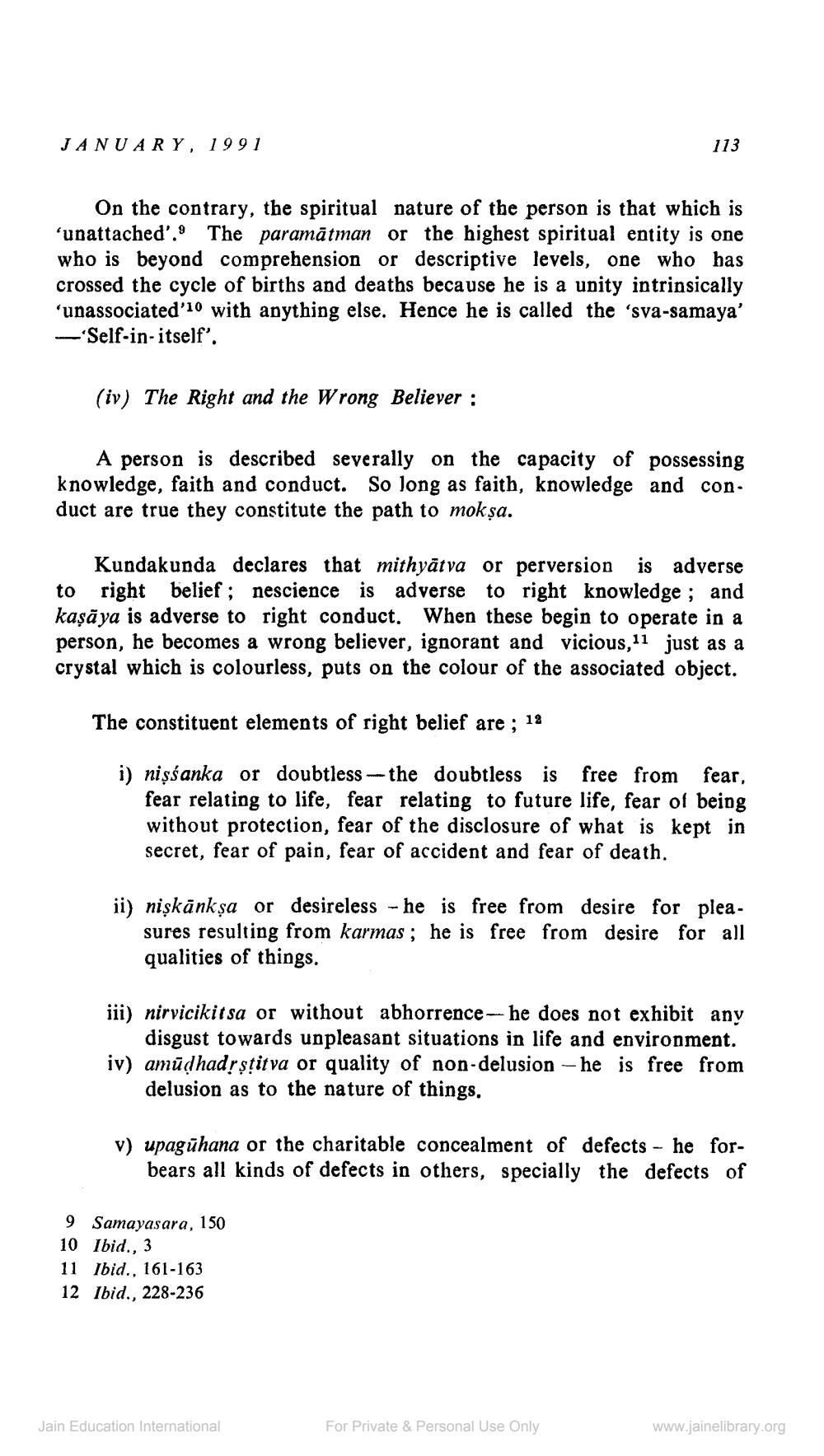________________
JANUARY, 1991
On the contrary, the spiritual nature of the person is that which is 'unattached'. The paramātman or the highest spiritual entity is one who is beyond comprehension or descriptive levels, one who has crossed the cycle of births and deaths because he is a unity intrinsically 'unassociated'10 with anything else. Hence he is called the 'sva-samaya' -Self-in-itself'.
(iv) The Right and the Wrong Believer :
A person is described severally on the capacity of possessing knowledge, faith and conduct. So long as faith, knowledge and conduct are true they constitute the path to mokṣa.
Kundakunda declares that mithyat va or perversion is adverse to right belief; nescience is adverse to right knowledge; and kaṣāya is adverse to right conduct. When these begin to operate in a person, he becomes a wrong believer, ignorant and vicious,11 just as a crystal which is colourless, puts on the colour of the associated object.
The constituent elements of right belief are ; 12
fear,
i) nişśanka or doubtless-the doubtless is free from fear relating to life, fear relating to future life, fear of being without protection, fear of the disclosure of what is kept in secret, fear of pain, fear of accident and fear of death.
113
ii) nişkānkṣa or desireless - he is free from desire for pleasures resulting from karmas; he is free from desire for all qualities of things.
iii) nirvicikitsa or without abhorrence- he does not exhibit any disgust towards unpleasant situations in life and environment. iv) amūḍhadṛṣṭitva or quality of non-delusion - he is free from delusion as to the nature of things.
v) upaguhana or the charitable concealment of defects he forbears all kinds of defects in others, specially the defects of
9 Samayasara, 150
10 Ibid., 3
11 Ibid., 161-163
12 Ibid., 228-236
Jain Education International
For Private & Personal Use Only
www.jainelibrary.org




